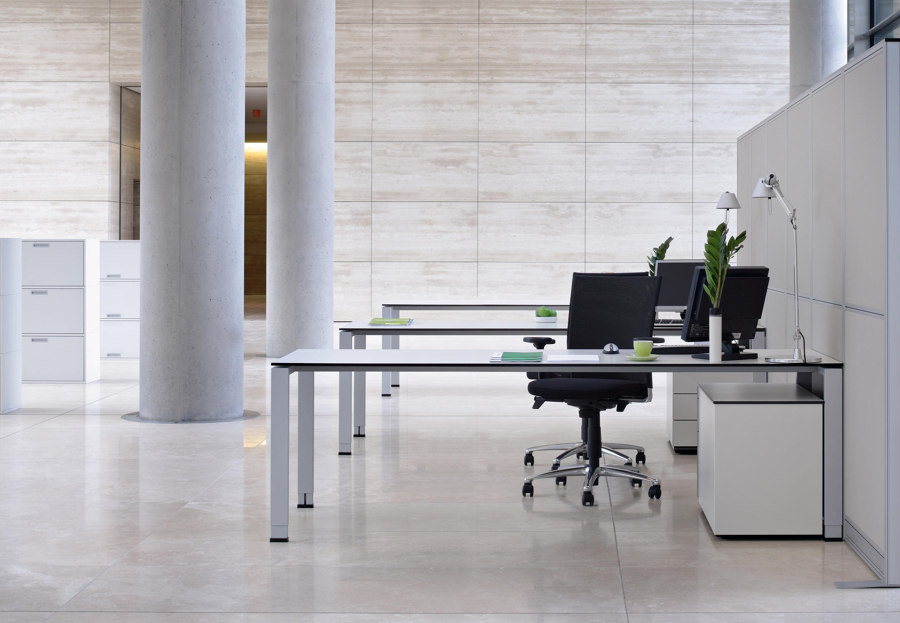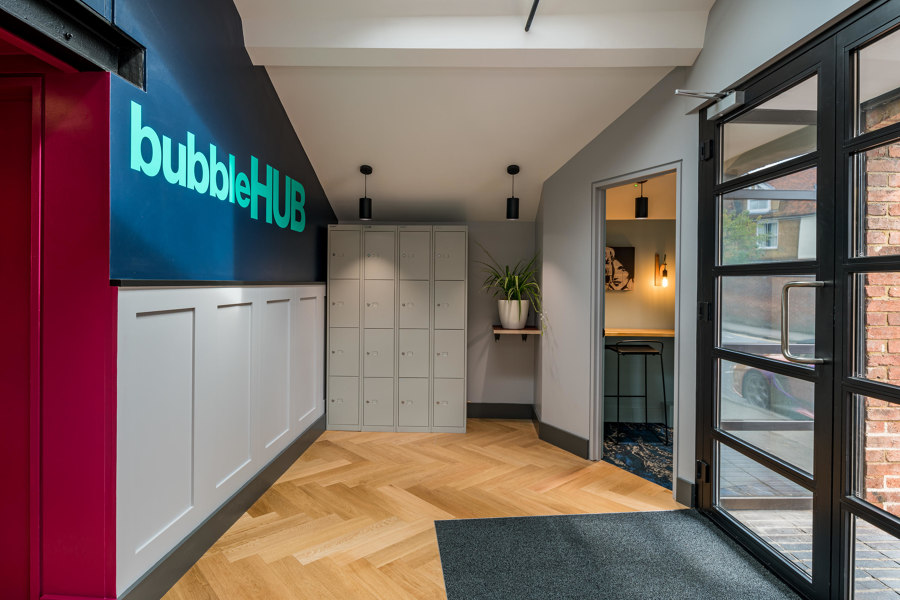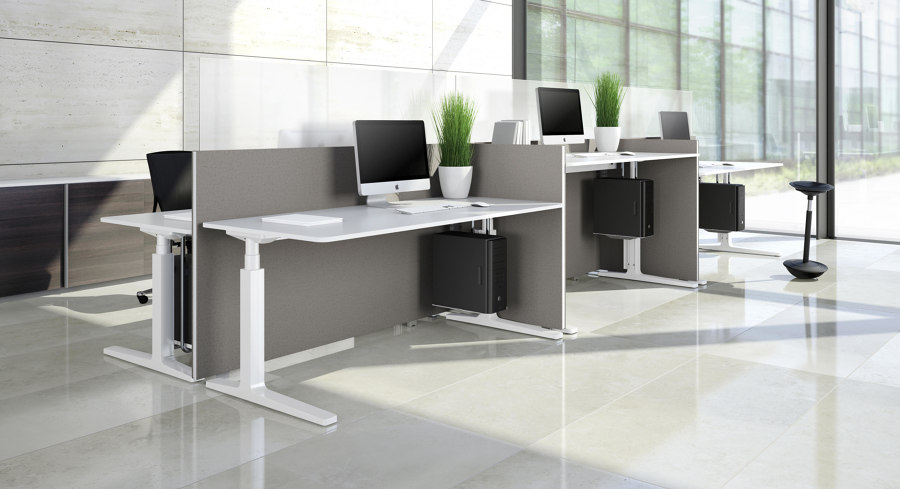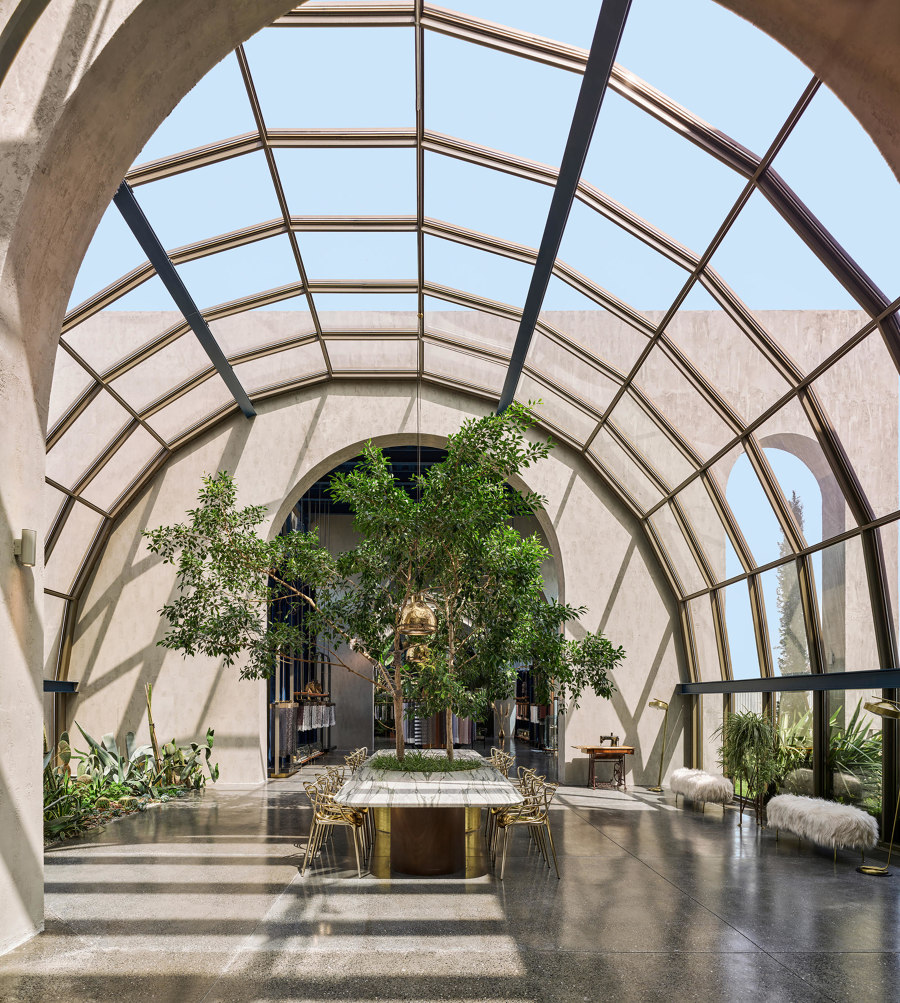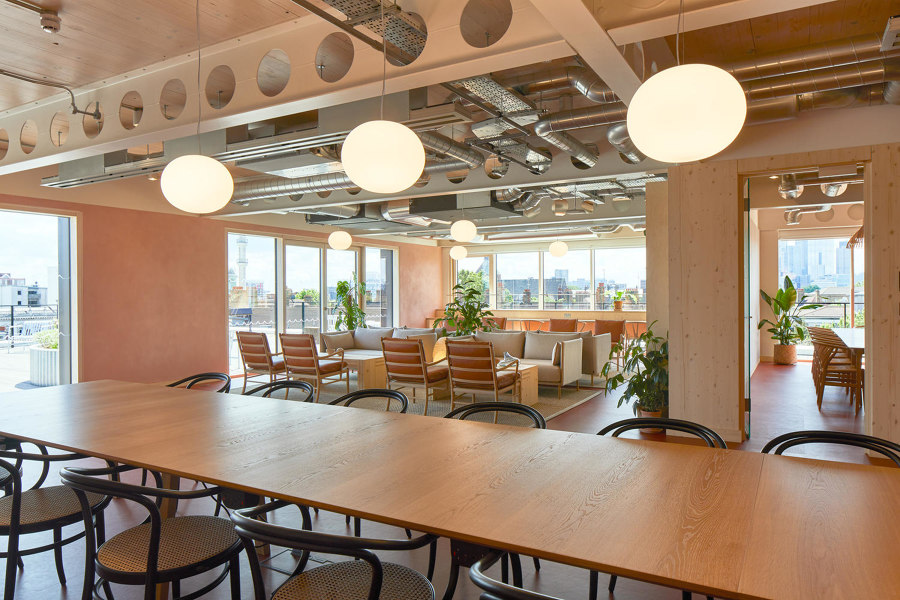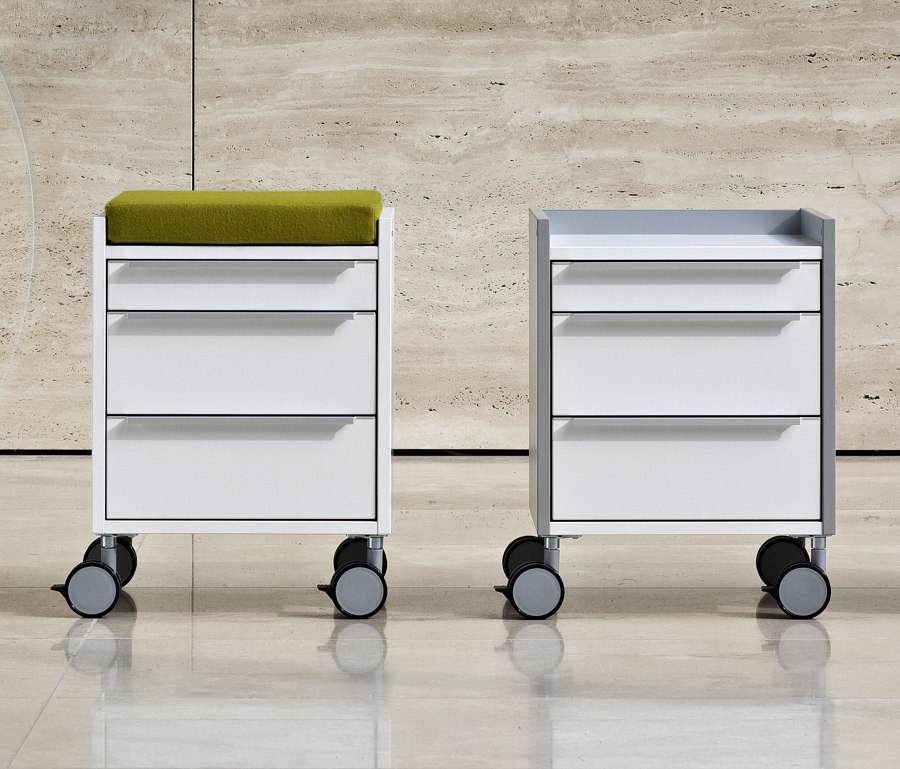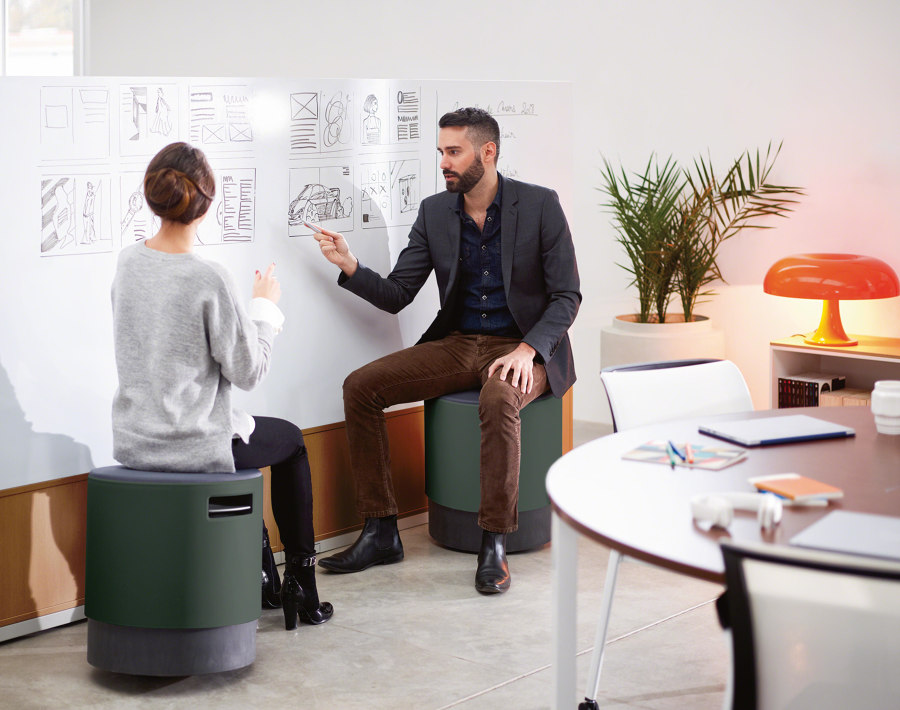Past a certain point, productivity becomes counterintuitive – the more you work, the less you do. But what if we’ve passed it already? The flexible workplace can help us get more done, by doing less.
The 6280.CH Coworking hub in Hochdorf, Switzerland, uses ceiling baffles to reduce noise traffic in mixed-use formal/informal meeting and work space. Photo: Peter Wuermli
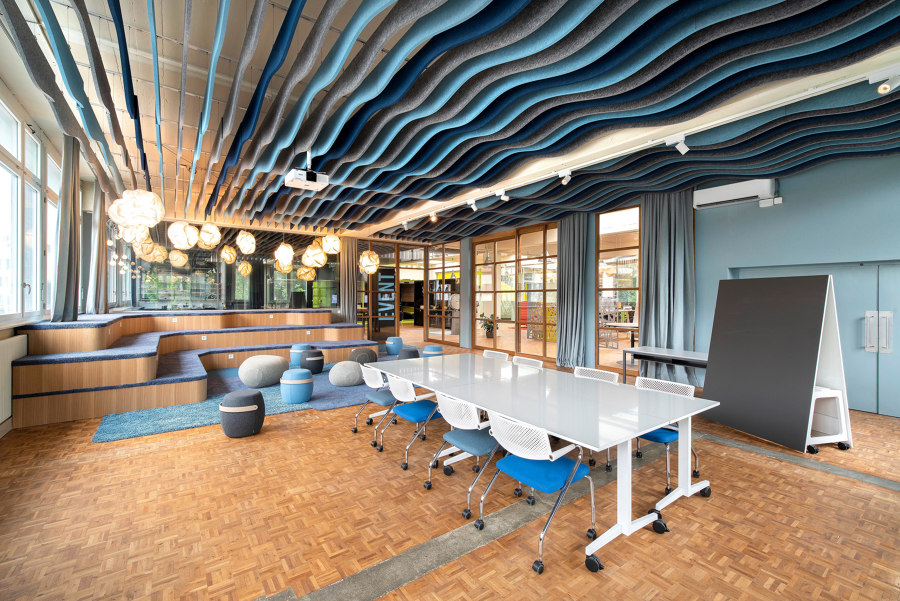
The 6280.CH Coworking hub in Hochdorf, Switzerland, uses ceiling baffles to reduce noise traffic in mixed-use formal/informal meeting and work space. Photo: Peter Wuermli
×Trials of the four-day working week have started across four continents, with Microsoft’s experimental period in Japan reportedly increasing productivity by 40 per cent.
The 100-80-100 economic model theorises that with the increased productivity of better-rested employees, 100 per cent of work is possible in 80 per cent of the time, meaning no reduction in salary.
The 100-80-100 economic model theorises that with the increased productivity of better-rested employees, 100 per cent of work is possible in 80 per cent of the time
Combined with a respectful and flexible approach to hybrid work, it sounds like the Holy Grail of work/life balance, but for the employer, these freedoms equate to unpredictable and fluctuating attendance. Office designers are therefore looking to replicate the techniques from flexible co-working spaces, while ensuring the required increase in productivity.
Functional furniture like VARIO's Icon tables and desks (top) combine with creative accents at The Coven (bottom) for enjoyable, but productive office work. Photo: Corey Gaffer Photography (bottom)
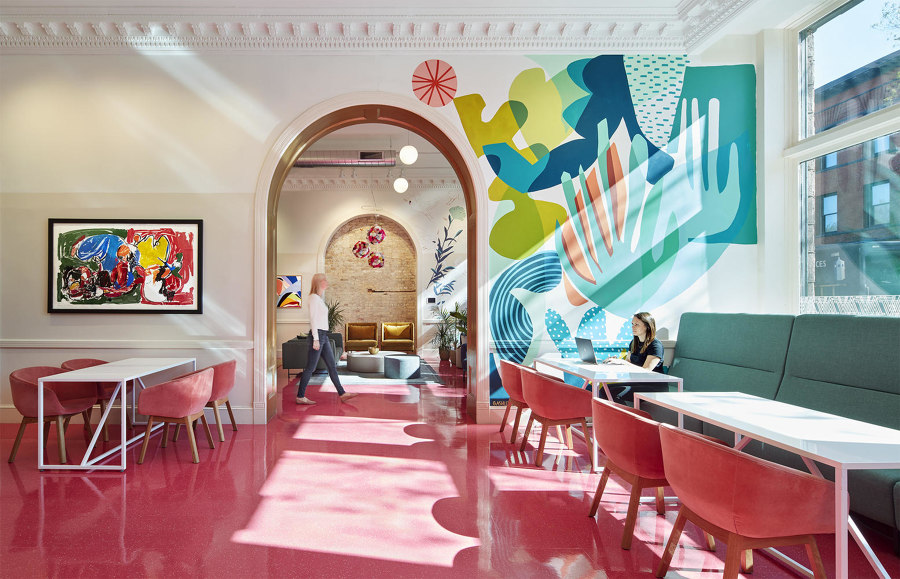
Functional furniture like VARIO's Icon tables and desks (top) combine with creative accents at The Coven (bottom) for enjoyable, but productive office work. Photo: Corey Gaffer Photography (bottom)
×Get creative with a colourful personality
Unlike most offices, people have a choice of co-workspace, so they’re often filled with expressive colour and design to make them fun, rewarding places to enjoy being in. Be wary, however, creativity is a tap that can be difficult to shut off. Too much can cause what is supposed to be a calm, focused environment into a wacky, distracting circus of stimulus.
The Coven, for example, is a co-workspace exclusively for women and non-binary workers. The space is filled with architectural, colourful and illustrated creativity with hot pink pipework and flooring, playfully interacting with other accents of dark blue and even gold. If you look carefully, however, you’ll notice nothing quite as expressive or personal in the office furniture. With traditional work zones featuring simple, functional chairs, and four-legged desks and tables similar to those in VARIO’s Icon range.
Lockers at bubbleHUB (top) or adjustable desks like VARIO's Change (middle) and those at 6280.CH (bottom) make co-workplaces more personal. Photos: Franklin + Franklin (top), Peter Wuermli (bottom)
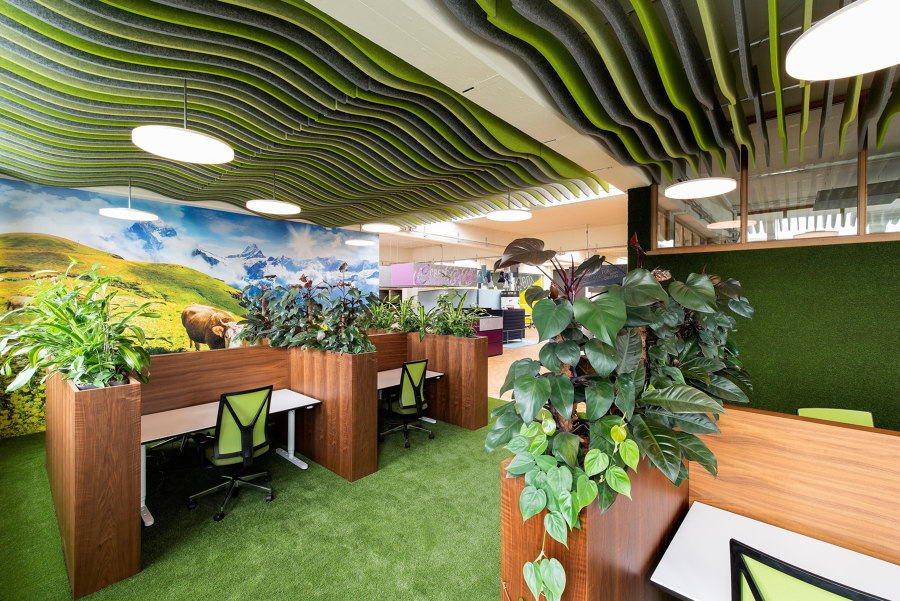
Lockers at bubbleHUB (top) or adjustable desks like VARIO's Change (middle) and those at 6280.CH (bottom) make co-workplaces more personal. Photos: Franklin + Franklin (top), Peter Wuermli (bottom)
×Adaptable furniture
All this creativity may give the workplace more personality, but reduced personal space in co-working environments can make employees feel less settled, especially when used to the extra personality of home as part of their hybrid model. They may seem like an unwelcome integration of school life into the workplace, but lockers like these at the bubbleHUB co-working space in St. Albans, UK, can provide imperative secure space to store one’s personal effects when not there.
Functionality is one of the biggest aspects of furniture’s productivity, and office-specific contract furniture manufacturers like VARIO understand how important it is for furniture to remain functional for as long as possible. Meaning pieces must be as adaptable as they can be, for multiple users and situations. Height-adjustable desks such as those applied at the 6280.CH co-working hub in Hochdorf, Switzerland, or VARIO’s sit/stand Change desk, rising from 650mm to 1300mm, create workspaces suitable for any employee’s preference.
Personal desk lights at The Cabinette (top) and interior foliage at Antik Dantel (middle, bottom) improve the working atmosphere. Photos: Luis Beltran (top), ibrahim Özbunar (mid, bottom)
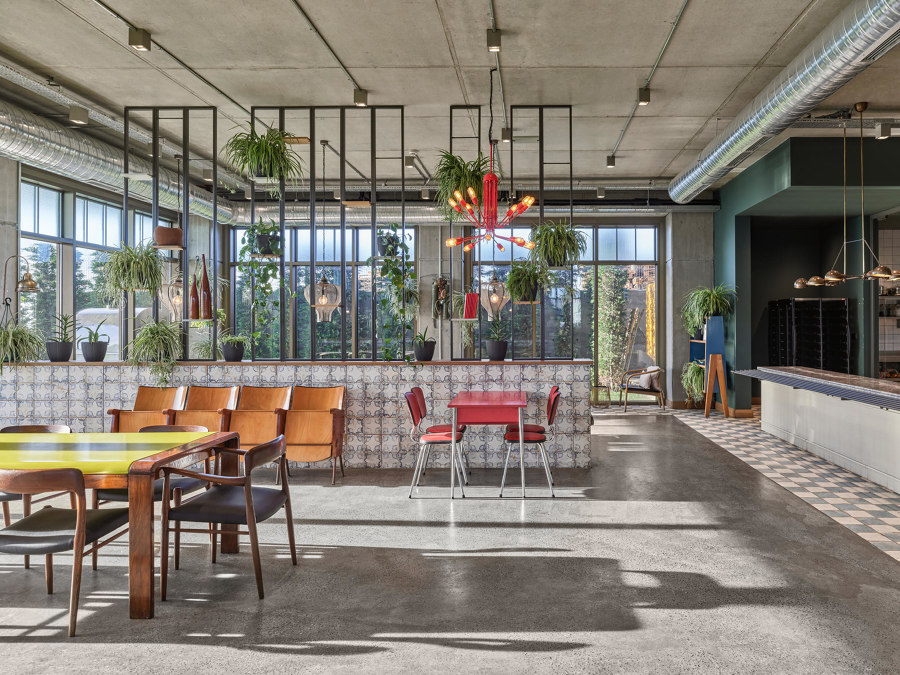
Personal desk lights at The Cabinette (top) and interior foliage at Antik Dantel (middle, bottom) improve the working atmosphere. Photos: Luis Beltran (top), ibrahim Özbunar (mid, bottom)
×Sound, light and air quality
Another feature installed at the 6280.CH co-working facility, are a variety of intriguing acoustic baffles rigged to the ceiling in all high-traffic areas. If you’re expecting employees to crack open a laptop in a communal space next to an informal meeting or canteen, they need to be able to hear themselves think, without the constant buffeting of others’ conversations.
Too much lighting, meanwhile, can give some employees headaches. Yet covering large open-plan offices with too little light creates dark spots where productivity wanes. The answer? The Cabinette co-working space in Valencia, Spain, by Masquespacio, may just have it. Subtle recessed lights are hidden under each workstation’s hood, giving users operational control over their own lightscape.
Even at the end of one day spent in a poorly ventilated space, workers will suffer from additional fatigue and apathy
Air quality has a large effect on health and wellbeing as well, both in the long and short term. Even at the end of one day spent in a poorly ventilated space, workers will suffer from additional fatigue and apathy. This is where the area of biophilic design becomes useful. Workplaces that integrate a lot of natural plant life into their environments, such as the Antik Dantel office/showroom in Istanbul, Turkey, not only create a calming visual treat and scent for their employees, but the foliage’s photosynthetic properties improve the air, too.
The light, airy, working rooftop at 6 Orsman Road combines the furniture and greenery of a sunroom with wide glass doors that open out onto the building's terrace. Photo: Ed Reeve
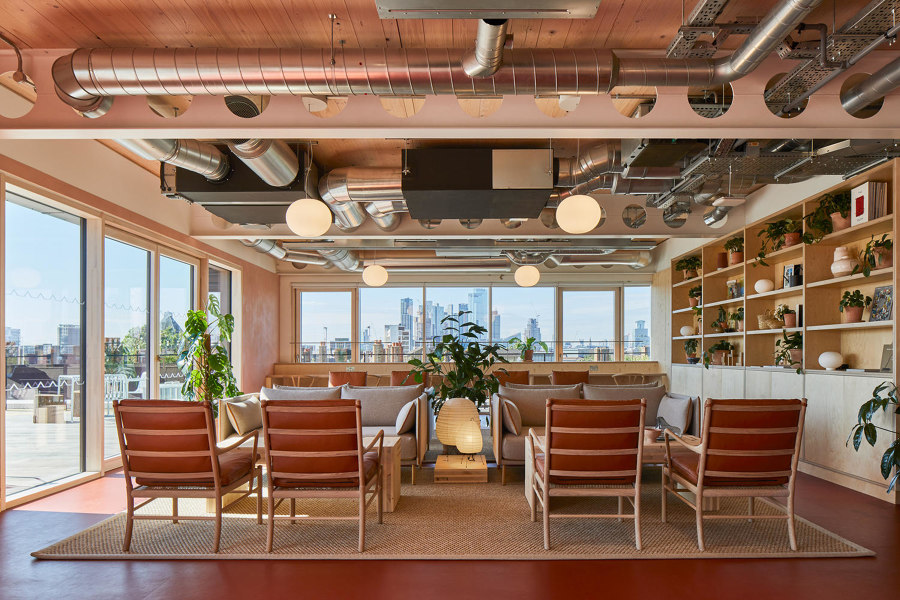
The light, airy, working rooftop at 6 Orsman Road combines the furniture and greenery of a sunroom with wide glass doors that open out onto the building's terrace. Photo: Ed Reeve
×Utilise exterior space
HVAC solutions, and the more traditional opening of a window, can improve air quality and ventilation in open-plan office environments. But at what cost? Both the environment and employee relations suffer, with thermostats and window handles a constant source of HR-bothering quarrels.
Many office buildings are turning their outdoor terrace spaces, previously useful only for a quick and cold cigarette break, into fully-functional, naturally-ventilated work areas. This Orsman Road Workspace by Waugh Thistleton Architects + Storey in London, UK, includes an informal workspace on its upper floor. Connected to a rooftop terrace, the area’s large glass doors open out in the summer months, filling the well-lit space with fresh air.
VARIO's Versa H and Steelcase's Buoy (top & middle) encourage efficient mini-meetings, while office hospitality spaces like at Servicenow (bottom) help employees relax around work. Photo: Yoav Peled
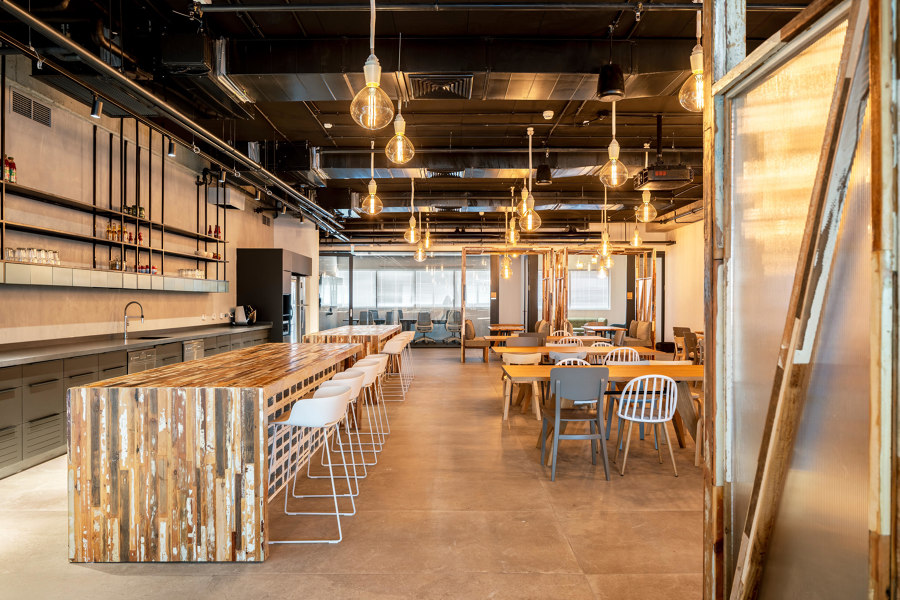
VARIO's Versa H and Steelcase's Buoy (top & middle) encourage efficient mini-meetings, while office hospitality spaces like at Servicenow (bottom) help employees relax around work. Photo: Yoav Peled
×Communication
One of modern office life's biggest motivation-sapping tasks is the unnecessary meeting. Long, post-lunch snoozefests can turn a 15-minute agenda into an entire yawn-stifling afternoon. By filling the furniture landscape with free-use seating such as Steelcase’s Buoy or multi-purpose storage like VARIO’s Versa H, with its integrated padded seat, employees can enter each others’ work zones or group together for quick, informal catchups.
While by adding a well-stocked bar or coffee space and café-style seating such as at the Servicenow workspace in Petah Tikva, Israel, employers encourage workers to use their break time to actually break away from their desks. Not only does this mean they don’t spill homemade fish curry on a shared-use keyboard, but away from the pressure of a formal meeting, that quick pre- or post-work drink can benefit from creative efficiency.
All this informal meeting time fills up employees social needs, leaving the 15-minute meeting an actual possibility.
© Architonic

